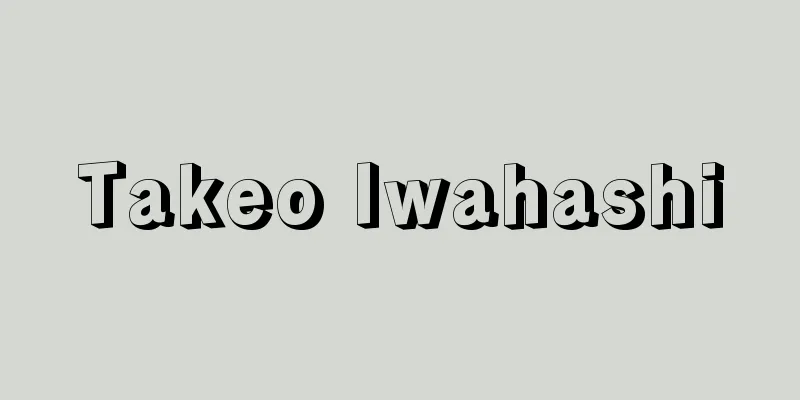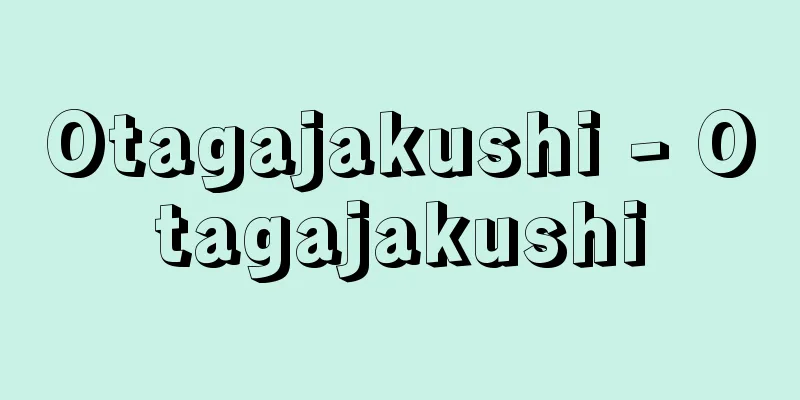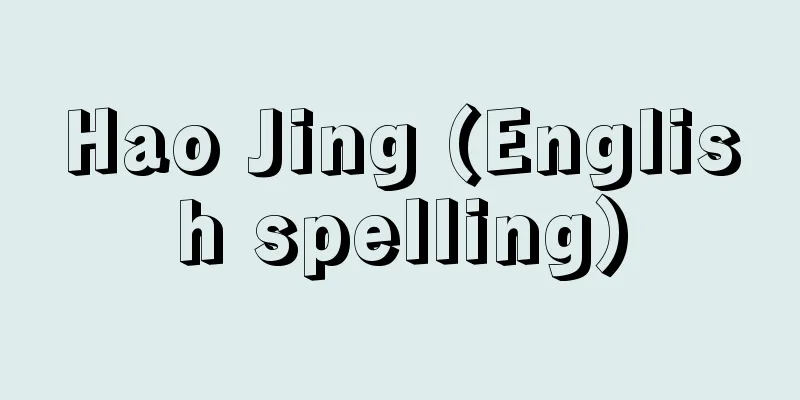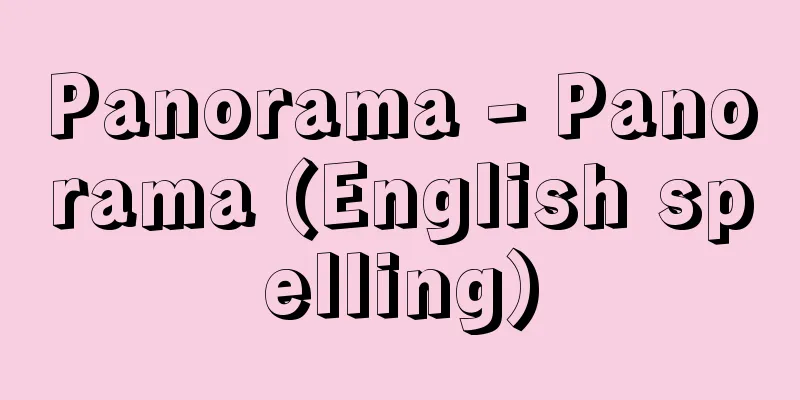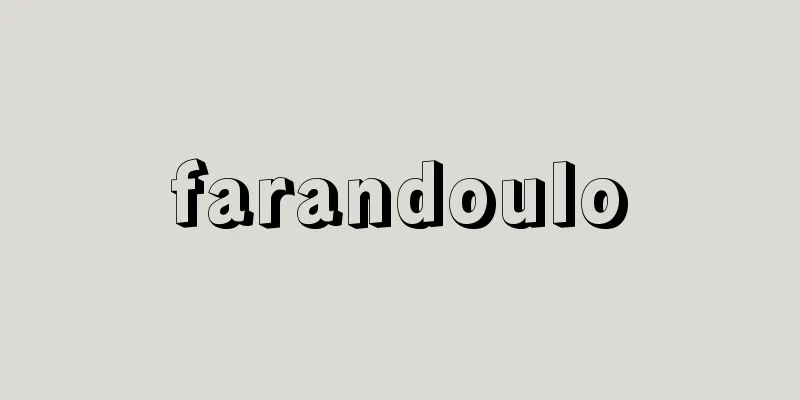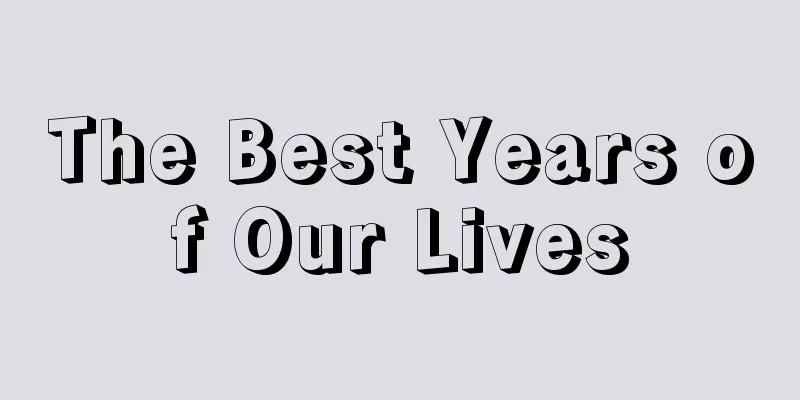Home education - home education
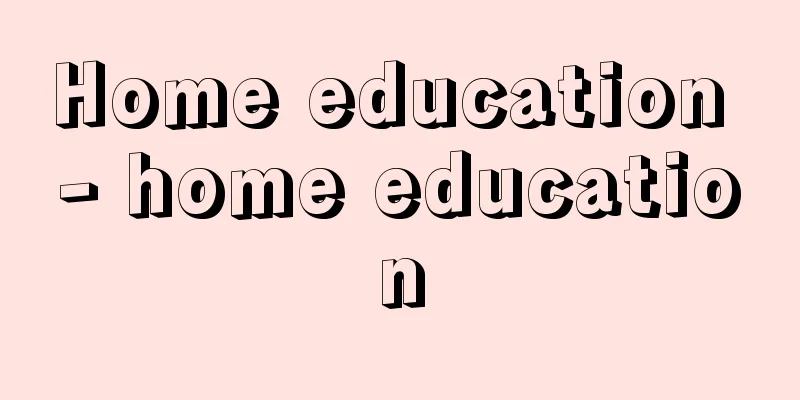
|
It means the education of children at home by parents or those in their place. In English it is called "education in the home," in German it is called "Familien-erziehung," and in French it is called "l'éducation familiale" (in English, "home education" would actually mean "home economics education"). The way it is said in English is quite different from that in continental European countries, and "school education" is expressed in a similar way in Germany and France as in Japan, but in English, "formal education" is more common than "school education." If we understand "teaching" as helping people to learn and explore independently through the exchange of will and emotion, we should not think of the education of children at home as being "all about discipline." Rather, we must first understand home education in the essential sense, separate from discipline, and then highlight the aspects that are expected of home education today, especially in the context of the combined forces of this and school education and social education (which can also be called extracurricular education). It is not clear when the term "home education" first came into use in Japan, but it can be traced back to the latter half of the Meiji period as a term primarily meaning "educational discipline." From the end of the Meiji period to the Taisho period, when Ellen Key's "The Century of the Child" was a popular read, the importance of home education was emphasized in women's magazines and the like, in parallel with the development of early childhood education through kindergartens and children's magazines. Children's magazines, picture books, baby organs and other musical instruments appear to have been considered above all else as teaching materials and tools for home education. [Hideo Fujiwara] Challenges in home educationFrom this perspective, the key points in understanding and practicing home education are: first, the educational response of the older family members, centered on the parents, to the various needs of the child at each stage of the child's development. For example, the mother should be the first to respond appropriately to the various instinctive movements and postures that appear in the child soon after birth, and use gentle words to invite emotional communication. This can be said to be the first step in helping the child learn to live without falling into emotional instability. Some researchers point out that for infants who have begun to walk, allowing them to experience small adventures while being watched over by their parents without helping them can often lead to creativity and serve as a learning experience that cultivates the imagination. In addition, there is data from psychologists who have found a difference in IQ between children who are raised exclusively at home until the age of two and those who are placed in group childcare facilities before the age of two, and there is also a report that shows that forcibly training children to be independent at the age of three or four does not necessarily lead to learning that cultivates independence. In the past, the key to home education was often thought to be the protective care given at home during critical periods in a child's growth and development. However, based on the accumulated knowledge of psychiatry and psychology regarding infants and young children, it can now be said that home education can be conceived and designed from a purely educational perspective, whereby the various needs of children are met at home. Second, based on the recognition that home education is not always the domain of the mother, nor is home education a standalone society in modern times, it is necessary to clarify good cooperative relationships in education led by parents. Within families, cooperation based on mutual trust between parents (whether biological parents or adoptive parents) or their strong memories of responding to the needs of children alone is the axis, and it is possible to add peripheral factors such as the appropriate cooperation of grandparents and others. On a broader social level, it may be said that the time has come to reconsider the establishment of various cooperative relationships led by parents with school educators and extracurricular educators. In this regard, the provisions of Article 818 of the Civil Code (Law No. 89 of 1896), which was revised after the Second World War, stating that "Parental authority shall be exercised jointly by both parents during their marriage..." and Article 820 of the same code, which states that "the person who exercises parental authority shall have the right and the obligation to care for and educate the child," are of great significance. Third, while eliminating the fallacy that "education is character development," we must clarify the intertwining of education and custody (supervision and protection) as the exercise of parental authority in actual family life, and establish life guidance that integrates the two according to the child's individuality and level of growth and development. In areas where school education and social education for young people are developing, the main role of the family will naturally be the education of emotions and the training of virtues. In other words, rich emotions lead to the development of intelligence and sociability, and creating situations for such learning experiences will become a major research topic for family members as well. Fourth, adults need to have a thorough understanding and acceptance of the privilege of children to receive an education and care in the home. The "Children's Charter" published in Japan in 1951 by the Children's Charter Drafting Conference can be said to have been a declaration of children's rights that strongly hinted at such a privilege, and the "Declaration of the Rights of the Child" adopted by the United Nations General Assembly in 1959 can be considered to have placed an even stronger emphasis on this privilege. In this sense, in light of the "hospitalism" (institutionalized child disorder) that was common among infants in group childcare in the Soviet Union after the revolution, and the similar phenomenon that was seen to some extent in the kibbutzim that developed in Israel after World War II, it can be said that the growth and development of infants, especially, at home is of paramount importance. In other words, the prototype of human education is found in the home, and it goes without saying that home education also helps to introduce lifelong learning (lifelong education). Even when children reach the stage where they can enjoy school education or social education for young people, the family still has, and should still have, its own unique educational role. [Hideo Fujiwara] Establishment of home education theoryThe establishment of "family pedagogy" (pédagogie familiale in France, the term "familial pedagogy" is beginning to be used in English-speaking countries as well) that places education in the pure sense at its core and also refers to "educational discipline" is an entirely new challenge for modern society. At present, efforts toward this end are being made primarily in the field of "parent education" as part of adult education, through interdisciplinary cooperation. In some countries, "family pedagogy" is also becoming a subject of "out-of-school education" for young people (what is called social education in Japan), and in the future it will likely be incorporated into school education for young people as well. Regarding the relationship between home education and lifelong education, there is a tendency in Japan to immediately link home education to "lifelong education," but lifelong education is the act of reorganizing the entire educational structure of civil society through the overall integration and adjustment of school education and "out-of-school education." Therefore, it is important that "home education studies," which are useful for "education for parenthood," are appropriately spread and distributed both within school education and among various "out-of-school education" programs. Only then can the education of children in individual families be considered within the context of lifelong education. [Hideo Fujiwara] "Sociology of Fathers" by L. Benson, translated by Hagiwara Motoaki (1973, Kyodo Publishing)" ▽ "Family Life and Home Education" (1977), edited and published by the Japan Women's Social Education Association" ▽ "Modern Home Education - Infant and Toddler Edition" (1984, Gyosei), edited by the Ministry of Education" ▽ "New Home Education in Practice" edited by Tamai Michiko (2000, Minerva Shobo) [References] | | | |Source: Shogakukan Encyclopedia Nipponica About Encyclopedia Nipponica Information | Legend |
|
家庭での、親権者またはこれにかわる者による子供の教育を意味する。英語はeducation in the home、ドイツ語でFamilien-erziehung、フランス語ではl'éducation familialeと表現する(英語でhome educationというと、むしろ「家庭科教育」を意味することになる)。英語での言い方はヨーロッパ大陸諸国とかなり異なる面があり、「学校教育」もドイツ、フランスでは日本と似たような表現になるが、英語ではschool educationというよりもformal educationのほうが普通である。「教える」を意思や感情の交流のなかで人の主体的な学習・探究を助けることだと解すると、家庭での子供の教育も、これを「しつけに尽きる」などと考えるべきではない。むしろ、しつけとは別な、本質的な意味での教育を、家庭教育についてもまず把握し、これと、学校教育や社会教育(校外教育ともいえる)との合力のなかで、今日とくに家庭教育に期待される面を浮き出させることが必要だといわねばならない。「家庭教育」の語が日本でいつから用いられ始めたかはさだかでないが、おもに「教育的しつけ」を意味するものとして、明治後半期までさかのぼってみることはできる。エレン・ケイ『児童の世紀』が愛読された明治末から大正期にかけて、幼稚園や子供雑誌等による幼児教育の発達と並行し、婦人雑誌等で家庭教育の重要性が強調された。子供雑誌、絵本や、ベビー・オルガンその他の楽器等は、なによりも家庭教育の教材・教具と考えられていたようである。 [藤原英夫] 家庭教育での課題こうした観点から家庭教育の理解・実践上の重点事項をあげると、第一は、子供の成長の節目ごとにおける子供の諸必要への、親権者を中心とする年長家族の教育的対応である。たとえば、出生後まもなく子供に現れる本能的なさまざまの動作や姿態に、だれよりも母親が適切に対応し、優しくことばもかけて心的交流へと誘うことである。これが、情緒不安定に陥らずに生きることを学ぶのを助ける第一歩だといえよう。また、よちよち歩きができるようになった幼児にとって、親が手を貸さずに見守ることのなかで、小冒険達成の経験をもたせることが創造性へとつながり、想像力を養う学習になる場合が少なくないと、指摘する研究者もいる。そのほか、満2歳になるまでもっぱら家庭で育てられた場合と、2歳未満で集団保育の場に預けられた場合との間に、知能指数の優劣を発見することになった心理学者のデータもあれば、3、4歳児の「親離れ」の強行訓練が、かならずしも自立心を養う学習につながるとは限らないことについてのリポートもある。 従来どちらかといえば、子供の成長発達上の危機的時期における家庭での監護的対応が家庭教育上の要点と考えられることが多かった。しかし、いまや乳幼児に関する精神医学的ないし心理学的な知見の集積を踏まえて、子供の諸必要への家庭でのより純粋に教育的な対応から、家庭教育を発想し構想することができるようになったといえる。 第二は、家庭教育がどこまでも母親の独壇場であるのでもなければ、家庭教育が独歩する現代社会でもないことの認識に基づき、親権者主導の教育上のよい協力関係を明確にしていくことである。家族間では、親権者(生父母であれ養父母であれ)相互の信頼に基づく協力ないし、それの確かな記憶に支えられる単独での、子供の諸必要への対応を軸とし、それへの祖父母などの協力が適切に行われるといった周辺の事情が加わることが考えられる。もっと広い社会的次元でも、学校教育従事者や校外教育従事者との、親権者主導のいろいろな協力関係の樹立が、改めて考慮されるべき時期がきたともいえよう。これらの点で、第二次世界大戦後改正された民法(明治29年法律89号)の第818条中の「親権は、父母の婚姻中は、父母が共同してこれを行う……」という定めや、同第820条の「親権を行う者は、子の監護及び教育をする権利を有し、義務を負う」といった積極的規定は重要な意味をもつ。 第三は、「教育即人間形成」といった謬見(びゅうけん)を排除しながら、教育と、親権者の権能行使としての監護(監督保護)との、実際の家庭生活における絡み合いを究明し、子供の個性や、成長発達の度合いに応じた、両者の統合としての生活指導を確立することである。学校教育や青少年のための社会教育の発展しているところでは、家庭が主として分担する役割は、おのずから情感教育とか、徳性訓練だということになるであろう。つまり、豊かな情感は、知性や社会性の開発へと導くのであり、家庭人にとってもそうした学習経験の場面構築が大きな研究課題となる。 第四は、子供が家庭で、監護とともに教育を受ける特権をもつものであることの、より徹底した理解と承認を大人たちがもつことである。日本で1951年(昭和26)児童憲章制定会議によって公にされた「児童憲章」も、そのような特権を強くにおわせる児童の権利宣言だったといえるし、さらに国際連合の59年総会で採択した「児童の権利宣言」は、いっそう強くこの特権をアピールしたものと考えられる。 そうした意味で、革命後のソ連で集団保育を受ける幼児に多くみられたという「ホスピタリズム」(施設児障害)や、第二次世界大戦後イスラエルで発展したキブツでも少なからずみられた同様な現象に照らしても、とくに乳幼児にとって家庭で成長発達することは、なににもまして大きな必要事だといえる。つまり、家庭にこそ人間教育の原型があるということであり、生涯学習(生涯教育)の導入部を助けるのもまた家庭教育であることはいうまでもない。子供が学校教育や青少年のための社会教育を享受する段階に到達しても、家庭は独自な教育上の役割を保有するものであり、また保有すべきだ、といわねばならない。 [藤原英夫] 家庭教育学の樹立純粋な意味での教育を核心に据え、「教育的しつけ」にも言及するような、「家庭教育学」(フランスではpédagogie familiale、英語圏でもfamilial pedagogyの語が用いられ始めている)の樹立は、現代社会の、まったく新しい課題である。現在そのための努力は、主として、成人教育としての「両親教育」parent educationの分野で、学際的な協力において行われている。国によっては、「家庭教育学」は青年のための「学校外教育」(日本でいう社会教育)の主題にもなりつつあるが、将来は青年のための学校教育にも取り入れられることになるであろう。 なお家庭教育と生涯教育との関係について、日本では、家庭教育をいきなり「生涯教育」に結び付けて考える傾向がないではないが、生涯教育とは、学校教育と「学校外教育」の全体の統合・調整を通して、市民社会の全教育構造を再編成する働きのことである。そこで、学校教育のなかにも、「学校外教育」の諸事業のなかにも、「親たることのための教育」に役だつ「家庭教育学」が適切に浸透し分布されることが重要である。それによって初めて個々人の家庭のなかで行われる子供の教育も、生涯教育の流れのなかで考察されることになるわけである。 [藤原英夫] 『L・ベンソン著、萩原元昭訳『父親の社会学』(1973・協同出版)』▽『日本女子社会教育会編・刊『家庭生活と家庭教育』(1977)』▽『文部省編『現代の家庭教育――乳幼児期編』(1984・ぎょうせい)』▽『玉井美知子編著『新しい家庭教育の実際』(2000・ミネルヴァ書房)』 [参照項目] | | | |出典 小学館 日本大百科全書(ニッポニカ)日本大百科全書(ニッポニカ)について 情報 | 凡例 |
<<: Private tutor - KATEIKYOSHI
>>: Cardigan (English spelling)
Recommend
Conservative Party
[1] A political party that takes a conservative st...
River system
A river system consisting of the main stream and a...
Outer core
The outer part of the core that makes up the cente...
Jehovah's Witness
…the name of the Christian sect commonly known as...
Indispensable
…This is said to be the predecessor of the handba...
Kiesinger, KG (English spelling)
...there were three patterns: (1) a coalition pat...
Takamatsuzuka Tomb - Takamatsuzuka Tomb
A mural-painted tumulus from the late 7th century...
Letter of seal - Inbanjo
One of the samurai document styles. A document in...
short ton
…(2) In the imperial system, there are two types ...
Shaykhī (English spelling)
...After studying in Iraq and Iran, he gained fam...
Fractography
This is translated as fracture surface analysis. I...
Kippenberg, A.
…During the time of the East-West division, the c...
formale Rationalisierung (English notation) formale Rationalisierung
…When science and technology are used instead of ...
A compassionate and gracious heart - Tajobushin
A full-length novel by Satomi Ton. It was seriali...
Cultural studies
It is difficult to define cultural studies because...
